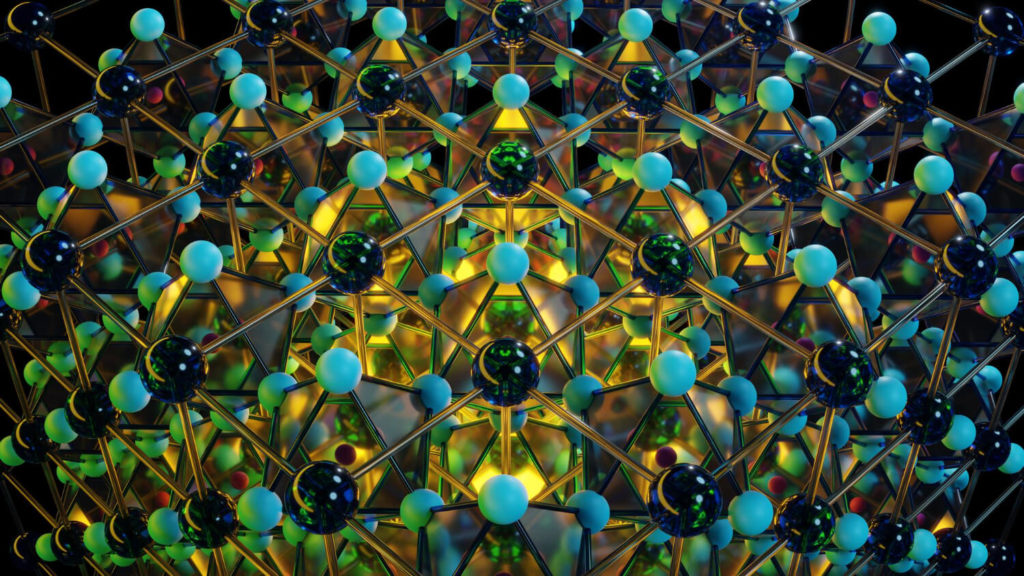Scientists from the Faculty of Physics of the University of Warsaw and the Polish Academy of Sciences used photons to
How does the brain work?
The mammalian brain is one of the mostcomplex and effective systems in the world. In the 1990s, neuroscientists showed that one area of the macaque cortex was capable of analyzing and classifying visual patterns in just 30 milliseconds. At the same time, each of the neurons involved in this process sends less than three messages in the form of electrical impulses. This was made possible due to the large number of synapses—connections between neurons—in the neural network of the macaque brain.
The human brain is part of an even more powerfulmechanism. It consists of 100 billion neurons, each of which creates, on average, several thousand connections with other nerve cells. This is how a neural network of approximately 100 trillion connections appears. Thanks to them, our brain is able to simultaneously recognize, reason and control movement. It performs trillions of operations per second while consuming only 20-25 watts of power.
What is the problem?
In comparison, conventional processors consumeten times more energy to recognize just a thousand different types of objects. This remarkable difference and exceptional brain performance is due to, among other things, the biochemistry of neurons, the architecture of neural connections, and the biophysics of neural computational algorithms.
Society's appetite for information is constantlyis growing, so there is a request for its fast and comprehensive processing. Conventional computing systems are unable to meet the growing demand for increasing computing power while simultaneously improving energy efficiency. But there is a solution, albeit a difficult one.
What to do?
The solution to the problem is neuromorphic devices.Their work is based on the principles of the human brain. They model the work of neurons and their processes (axons and dendrites), which are responsible for the transmission and perception of data. Connections between neurons are formed due to synapses - special contacts through which electrical signals are transmitted.
 en.freepik.com
en.freepik.com
Neuromorphic devices are the futureartificial intelligence, as they allow much faster and more efficient processing of information in tasks such as image recognition. But creating them is not so easy, but scientists from the Faculty of Physics of the University of Warsaw and the Polish Academy of Sciences have a solution.
What did the scientists suggest?
To solve the problem, scientists turned toquantum computing. They proposed using photons in such a way that they could be created by pulsed neural networks. The advantage of photonic systems is that they provide communication at the speed of light, low loss and low power consumption.
The advantage of photons is thattheir distribution occurs with virtually no energy loss. Unfortunately, due to the fact that they interact relatively weakly, they are difficult to use to perform computational operations in a similar way to electronic systems.
 Optical microcavity as a pulsating neuron.Visualization: Mateusz Krol, source: Faculty of Physics, University of Warsaw). Credit: Mateusz Krol, source: Faculty of Physics, University of Warsaw
Optical microcavity as a pulsating neuron.Visualization: Mateusz Krol, source: Faculty of Physics, University of Warsaw). Credit: Mateusz Krol, source: Faculty of Physics, University of Warsaw
Scientists have proposed a solution in which photonsinteract strongly with particles of very low mass - excitons. This strong interaction is possible when photons and excitons are trapped together in so-called optical microcavities, resulting in a repeated exchange of energy between them. This type of synergy, which occurs in a microcavity between a photon and an exciton, is so stable that physicists call it an excisional polariton (or polariton for short).
Polaritons have unique properties,especially under certain conditions, they can exhibit a phase transition into a Bose G Einstein condensate. In this state, previously independent multiple polaritons become indistinguishable.
What did scientists come up with?
Based on the latest experiment,Scientists have noticed that when polaritons are excited by laser pulses, they emit light pulses in a way that mimics the firing of biological neurons. This effect is directly related to the phenomenon of Bose-Einstein condensation, which either suppresses or enhances the emission of pulses.
Scientists who developed the theoretical foundationscombining research on polaritons with the LIF model of a neuron (Leaky Integrate-and-Fire model), said that the group is now working on solving the problem of scalability - connecting many neurons into a network.
The authors of the study suggest usingnew computing paradigm. It is based on the encoding of information by impulses that trigger a signal only when it arrives at the neuron sequentially at the right time.
How will it work?
Currently, neural networks uselayers of interconnected neurons that fire impulses depending on the importance assigned to each connection (in the mathematical description we refer to “weights”). In contrast to this type of solution, in the new optical neural network described in the Laser and Photonics Review, neurons fire (i.e. become active) in response to a sequence of pulses. They can differ in different intensities and different time intervals.
 en.freepik.com
en.freepik.com
As in the case with biologicalneurons that are excited by electrical impulses, there is a certain threshold above which this sequence of impulses reaching the neuron triggers a signal that is transmitted further. Polaritons make it possible to mimic a biological system because only stimulation with the appropriate number of photons above a certain threshold results in the formation of a Bose-Einstein condensate and then the emission of a short picosecond flash, which is a signal to the next neuron.
To create a sample that scientistsused to capture photons and observe a condensate of excitonic polaritons, the scientists arranged the atoms of different types of semiconductor crystals layer by layer. They used molecular beam epitaxy to create a prototype photonic neuron. To achieve the Bose-Einstein condensate state, a temperature of 4 Kelvin (–269.15 °C) was required.
What's next?
Now scientists are planning to adapt the experimentfor room temperature to avoid cryogenic conditions. Research is needed into new materials that will make it possible to obtain Bose-Einstein condensates also at high temperatures. In order for photonic neurons to be combined into networks, they must be able to transmit signals to each other. Ideally, the direction of transmission, that is, the connection diagram, should be easily changed as needed.
Scientists are still encountering newproblems in their research of neuromorphic systems. Scientists' new idea to recreate the spikes of biological neurons in the optical region can be used to create a network and then a neuromorphic system. It sends information orders of magnitude faster and in a more energy-efficient way compared to existing solutions.
Read more:
Archaeologists have officially confirmed the legends from the Bible
It turned out what happens to the cells of the body when the heart dies
Starlink signal hacked to be used as an alternative to GPS